ESA’s Copernicus Sentinel 1
Europe’s Copernicus programme uses accurate and timely data from Earth observation satellites and other sources to provide key information services to improve the way the environment is managed, help mitigate the effects of climate change, enable the creation of new applications and services for citizens and businesses, and to safeguard everyday lives.
Images Copyright ESA/DLR
Satellites helping to modernise railways
Satellites will soon make train travel safer by improving how the networks are controlled in remote areas where ground equipment is too costly, according to a communiqué issued by the European Space Agency on 12th May.
 Satellite antenna on the cabin roof of a train
Satellite antenna on the cabin roof of a train
For the first time in Europe, a project co-funded by the ESA has shown how navigation and telecommunication satellites can be used together with existing rail signalling systems.
 Engineers test the system
Engineers test the system
 Train drivers receive information via satellite
Train drivers receive information via satellite
ESA Sentinel’s crucial help to Namibia
 Flooded Namibia-Botswana border
Flooded Namibia-Botswana border
One of ESA Sentinel-1A’s first images was crucial in helping the Namibian authorities decide how to respond to a serious flood.
 Namibia flood mapping by Sentinel 1A
Namibia flood mapping by Sentinel 1A
In recent years, floods in Namibia have affected hundreds of thousands of people, destroying homes and washing away vital crops and livestock. In this region, floods also bring further suffering in the form of disease, such as malaria and cholera.
Monitoring these devastating floods is normally hampered by the weather because sensors on aircraft cannot see through the cloud and are limited to relatively small areas. Trying to access remote flood-stricken areas on the ground is also impractical.
 Namibia from Sentinel 1A
Namibia from Sentinel 1A
Galileo satellites arrive at Europe’s spaceport
Europe’s two latest Galileo navigation satellites touched down on 7th May at Europe’s Spaceport in French Guiana, ready for their joint launch this summer.
Packed safely within protective and environmentally controlled containers, the satellites were carried across the Atlantic aboard a 747 cargo carrier.
 Twin Galileo containers as flown into French Guiana overnight 6th/7th May
Twin Galileo containers as flown into French Guiana overnight 6th/7th May
 The Galileo satellites unloaded at Cayenne-Félix Eboué Airport in French Guiana
The Galileo satellites unloaded at Cayenne-Félix Eboué Airport in French Guiana
NTSB recommends better weather information

On 6th May the Washington-based National Transportation Safety Board (NTSB) issued nine recommendations addressing the need to provide more comprehensive pre-flight weather information to pilots.
These recommendations are based on NTSB accident investigations involving aircraft encountering weather conditions, such as adverse surface wind, dense fog, icing, turbulence, and low-level wind shear. Currently, although information on these conditions may exist, it is not always provided to pilots through NWS products during preflight weather forecasts.
NOAA and HF radar for safe navigation
The newest form of HF radar technology, seen here in the accompanying illustration of a coastal beach, is being used for the new NOAA surface current product.
 The newest form of HF radar technology, seen here on a coastal beach, is being
The newest form of HF radar technology, seen here on a coastal beach, is being
used for the new NOAA surface current product
A new NOAA National Ocean Service website will provide mariners near realtime coastal ocean surface current observations and tidal current predictions in coastal waters using high frequency (HF) radar, making marine navigation safer for mariners and commercial shippers.
Navigation safety information: VTS advice

It is understood that the British Government through its information service, to be found at www.gov.uk is now introducing users to navigation safety information, particularly VTS advice, and where it may be found.
Keying in to www.gov.uk/navigation-safety-for-uk-seafarers delivers various links at which information may be recovered.

IATA delivering aviation sustainibility through unity of purpose
 From its HQ in Geneva the International Air Transport Association (IATA) has called on all aviation stakeholders to stay focused and unified to deliver a vision for a sustainable aviation future.
From its HQ in Geneva the International Air Transport Association (IATA) has called on all aviation stakeholders to stay focused and unified to deliver a vision for a sustainable aviation future.
“Throughout the first 100 years of commercial passenger flight, aviation has demonstrated a proud history of teamwork and delivered innovation that has changed our world dramatically,” said Tony Tyler, IATA’s Director General and CEO, at the 7th Air Transport Action Group Environmental Summit in Geneva. He continued, “The strength of the aviation industry’s response to the environmental challenge has been founded on our unity of purpose. The industry has been clear with its call for a global environmental solution and a commitment to three sequential carbon-reduction targets. Working together, we have demonstrated progress with more efficient operations, investments in technology and by driving improvements in the use of infrastructure.”
ICAO and WCO joint conference

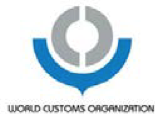 It was announced from Montreal on 17th April that the International Civil Aviation Organization (ICAO) and the World Customs Organization (WCO) had completed a joint conference on air cargo security and facilitation in Manama, Bahrain reinforcing their common message that a secure and efficient air cargo supply chain is essential for international trade and world economic development.
It was announced from Montreal on 17th April that the International Civil Aviation Organization (ICAO) and the World Customs Organization (WCO) had completed a joint conference on air cargo security and facilitation in Manama, Bahrain reinforcing their common message that a secure and efficient air cargo supply chain is essential for international trade and world economic development.
Resilient PNT forum report



The Resilient PNT Forum was organised by the International Association of Institutes of Navigation (IAIN), the European Group of Institutes of Navigation (EUGIN) and the International Association of Marine Aids to Navigation and Lighthouse Authorities (IALA). Attendance was approximately 65, from the maritime, aviation and land transport sectors, as well as timing and finance.
Following the presentations in the opening session, Prof Brad Parkinson gave a short introduction to the discussion. He used the US situation to illustrate the difficulty of obtaining political commitment, in spite of the clear technical, economic and safety case for resilient PNT.
The discussion covered the broad topics: What is Resilient PNT? The Need for Resilient PNT, Strategy for Resilient PNT, Plan of Action and Conclusions. The report contains notes taken on those discussions.
Resilient PNT forum report



The Resilient PNT Forum was organised by the International Association of Institutes of Navigation (IAIN), the European Group of Institutes of Navigation (EUGIN) and the International Association of Marine Aids to Navigation and Lighthouse Authorities (IALA). Attendance was approximately 65, from the maritime, aviation and land transport sectors, as well as timing and finance.
Following the presentations in the opening session, Prof Brad Parkinson gave a short introduction to the discussion. He used the US situation to illustrate the difficulty of obtaining political commitment, in spite of the clear technical, economic and safety case for resilient PNT.
The discussion covered the broad topics: What is Resilient PNT? The Need for Resilient PNT, Strategy for Resilient PNT, Plan of Action and Conclusions. The report contains notes taken on those discussions.
ICAO annual safety report

The Montreal-based International Civil Aviation Organization (ICAO) released its annual Safety Report on 10th April, reflecting very positive global aviation safety outcomes for 2013.
The global accident rate came in at 2.8 per million departures versus 3.2 per million in 2012, representing a 13% decrease. The number of fatal accidents involving scheduled commercial operations remained steady at nine during 2013, with total fatalities down to 173 compared to 388 in 2012 – a 55% decrease. Using 2010 as a baseline, fatalities were down by 72%.
 Building on their previous work in the area, ICAO and the International Air Transport Association (IATA) also published a comprehensive joint aviation safety analysis covering 2013 in their reports – a first for both organizations.
Building on their previous work in the area, ICAO and the International Air Transport Association (IATA) also published a comprehensive joint aviation safety analysis covering 2013 in their reports – a first for both organizations.
Transas contract with Glasgow college
It was announced on 14th March that Transas Marine and City of Glasgow College had signed a contract to supply a simulation complex. The simulation centre in the Riverside campus which is under construction, will be one of the largest, the most up to date and most technically advanced simulation suite in the UK, it is claimed. Training courses are expected to start in Autumn 2015.
 The signing of the contract between Transas Marine and City of Glasgow College
The signing of the contract between Transas Marine and City of Glasgow College
The ship simulator suite forms a core part of the new Riverside Campus and the complex nature of the equipment and fit out require a high degree of integration with the New Campus NPD Co., (the Scottish Government’s Non-Profit Distributing revenue funded procurement model) design. Transas provided technical integration input into the refinement of design for the New NPD Campus project.
The suite will include a full mission engine room simulator; simulator labs for studying of electronic navigation systems; GMDSS training; liquid cargo handling and DP operations’ training.
Two new Panama beacons

Aids to navigation specialist Almarin has carried out the design, manufacture and supply of two beacons for the access channel to Manzanillo Bay in the province of Colon (Panamá). The Spanish contractor Delta 9 awarded this project to Almarin, which involved the design and supply of 16metre focal plane ALT7 model towers, with corresponding lights, AIS systems and photovoltaic energy systems.

Galileo and electric propulsion
 Galileo second generation – photo © ESA
Galileo second generation – photo © ESA
Future Galileo navigation satellites might adopt electric propulsion to reach their final orbits, with the weight savings offering larger payloads and a broader range of services in the 2020s, it was announced by ESA on 7th April 2014.
 Electric thruster test – photo © ESA
Electric thruster test – photo © ESA
This would offer several advantages. Freeing up mass by doing without the rocket’s upper stage means more satellites could be carried by individual rocket: up to three by Soyuz, while Ariane 5s carrying commercial telecom satellites could piggyback a quartet as secondary passengers. The lightweight Vega launchers might loft individual satellites.
At the same time, the mass of each satellite could still increase – up to 1500 kg or more from the current 700 kg. Enlarging the satellite would enable an expanded navigation payload to support a greatly extended range of Galileo services.
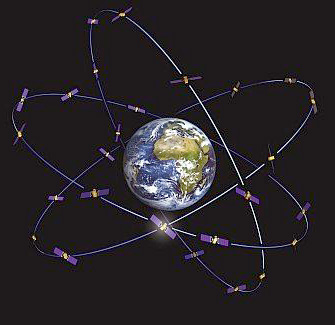 Galileo’s three orbital planes – photo © ESA
Galileo’s three orbital planes – photo © ESA
ESA launches Sentinel-1A
The ability of European citizens, policymakers and service providers to access key environmental data on a routine basis will take a major step forward following the launch on 3rd April of ESA’s Sentinel-1A satellite. This 2.3 tonne satellite lifted off on a Soyuz rocket from Europe’s Spaceport in Kourou, French Guiana at 2102 GMT (2302 CEST).
 Sentinel-1A lift off – photo © ESA
Sentinel-1A lift off – photo © ESA
“Sentinel-1A opens a new page in the implementation of Copernicus, the second
EU flagship space initiative, after the Galileo positioning system,” said Jean-Jacques Dordain, Director General of ESA. “The Copernicus programme will provide European citizens with the most ambitious space-based services in the world for environmental and security applications.”
 Radar vision – photo © ESA
Radar vision – photo © ESA
Kongsberg Seatex ‘Blue Force’ AIS
 The AIS 300BF is tailor-made for vessels undertaking demanding coast guard, anti-piracy, navy and border police operations – © Torbjørn Kjosvold – Forsvarets mediearkiv
The AIS 300BF is tailor-made for vessels undertaking demanding coast guard, anti-piracy, navy and border police operations – © Torbjørn Kjosvold – Forsvarets mediearkiv
Kongsberg Seatex, a Kongsberg Maritime subsidiary and a global leader in the development and production of precision technology for marine applications, has announced the launch of a new generation of Blue Force (BF) Automatic Identification Systems (AIS), the AIS 300BF.
This AIS 300BF is tailor-made for vessels undertaking demanding coast guard,
anti-piracy, navy and border police operations. Simple to install and maintain, the Class A mobile station allows friendly forces to identify vessels, while restricting the transmission of their own AIS information.
 The AIS 300BF supersedes the current AIS 200BF unit
The AIS 300BF supersedes the current AIS 200BF unit
Galileo solar arrays
 A typical Galileo satellite – photo © ESA
A typical Galileo satellite – photo © ESA
On 24th March the European Space Agency (ESA) introduced the solar arrangements for Europe’s Galileo satellites currently testing navigation messages.
 Sun simulator for flash testing – photo © ESA
Sun simulator for flash testing – photo © ESA
A pair of 5 metre-long solar arrays supply 1.9 kilowatts of power – about the same as an average household’s consumption, it is understood. These arrays are sourced from the Dutch Space company in The Netherlands.
 Inspecting solar wings – photo © ESA
Inspecting solar wings – photo © ESA
 Solar wings on Galileo satellite – photo © ESA
Solar wings on Galileo satellite – photo © ESA
New Galileo station in The Azores
 Santa Maria Station – photo © ESA
Santa Maria Station – photo © ESA
The latest addition to Galileo’s worldwide ground infrastructure has been made in the mid-Atlantic, on Portugal’s Santa Maria island in the Azores, it was reported from ESA on 27th March.
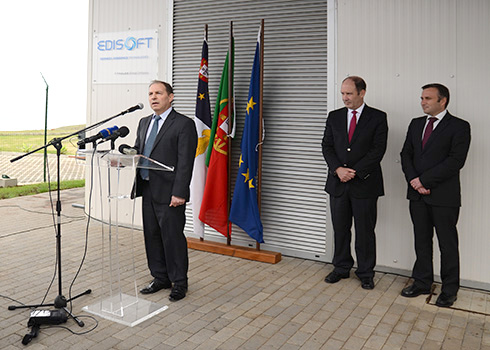 Opening ceremony – photo © ESA
Opening ceremony – photo © ESA
 Ceremony participants – photo © ESA
Ceremony participants – photo © ESA
This new Galileo Sensor Station joins a far-flung network of stations monitoring signal quality, clock timings and positioning of the Galileo satellites orbiting Earth.
 Europe’s Galileo satnav system – photo © ESA
Europe’s Galileo satnav system – photo © ESA
ACCSEAS 2014 conference

ACCSEAS, an EU-funded project to support improved maritime access to the North Sea Region through minimising navigational risk, welcomed over more than 80 regional and international shipping experts to Edinburgh for its second Annual Conference, held in March.
This event presented an array of e-Navigation test-bed solutions, all of which are aimed at increasing accessibility and improving navigational safety in the increasingly busy shipping waters of the North Sea Region.

Melaha 2014 – Resilience Navigation
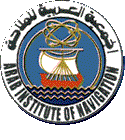 Details have been received from the Arab Institute of Navigation (AIN), its Organising Committee and the Scientific Committee, in respect of MELAHA 2014 Annual Conference with the theme Resilience Navigation, to be held in the Radisson Blu Hotel, Alexandria, Egypt from 1st to 3rd September 2014.
Details have been received from the Arab Institute of Navigation (AIN), its Organising Committee and the Scientific Committee, in respect of MELAHA 2014 Annual Conference with the theme Resilience Navigation, to be held in the Radisson Blu Hotel, Alexandria, Egypt from 1st to 3rd September 2014.
Resilience Navigation will offer an ideal opportunity to pursue continuing navigational education and learn about recent advances, future developments and research avenues, and exchange scientific ideas and experiences.
ICAO Canadian meeting

On 7th March senior officials from the International Civil Aviation Organization (ICAO) met with Canadian Foreign Affairs Minister, John Baird, and other government officials from Canada, Québec and Montréal for annual high-level talks.
 Shown on the occasion from left to right: Helena Borges, Associate Deputy Minister of Transport, Canada; Michel Audet, Deputy Minister of International Relations, La Francophonie and External Trade, Québec; Dr. Olumuyiwa Benard Aliu, President of the ICAO Council; The Honourable John Baird, Minister of Foreign Affairs, Canada; Raymond Benjamin, Secretary General of ICAO; Denis Coderre, Mayor of Montréal; and Mark Allen, Representative of Canada on the ICAO Council
Shown on the occasion from left to right: Helena Borges, Associate Deputy Minister of Transport, Canada; Michel Audet, Deputy Minister of International Relations, La Francophonie and External Trade, Québec; Dr. Olumuyiwa Benard Aliu, President of the ICAO Council; The Honourable John Baird, Minister of Foreign Affairs, Canada; Raymond Benjamin, Secretary General of ICAO; Denis Coderre, Mayor of Montréal; and Mark Allen, Representative of Canada on the ICAO Council
Eurocontrol go-ahead for centralised services
 At the end of February it was announced from Brussels that the 40 EUROCONTROL Member States have decided to go ahead with developing, setting up and demonstrating six Centralised Services.
At the end of February it was announced from Brussels that the 40 EUROCONTROL Member States have decided to go ahead with developing, setting up and demonstrating six Centralised Services.
Centralised Services deal with ATM data and support the Air Traffic Control technology stemming from the Single European Sky Research and Development Program (SESAR). They are being put in place on a central pan-European basis to cover the airspace of the 40 EUROCONTROL Member States.
Turbulence and high-capacity transport aircraft
Over the recent summer months, the ATSB has seen an unprecedented increase
in turbulence events. The Australian Transport Safety Bureau’s monitoring of
the latest aviation events has revealed a significant increase in the number of
weather-related occurrences involving high-capacity air transport aircraft.

Turbulence being the leading cause of in-flight injuries to passengers and
cabin crew, the ATSB has produced a booklet, Staying Safe against In-flight
Turbulence, which is available for free download.
Tideland products for Kittiwake platform
In mid-March Tideland Signal reported that it had supplied Petrofac with Syncrolan LED light stations and fog signals to mark the Kittiwake platform in the central North Sea 160km north east of Aberdeen.
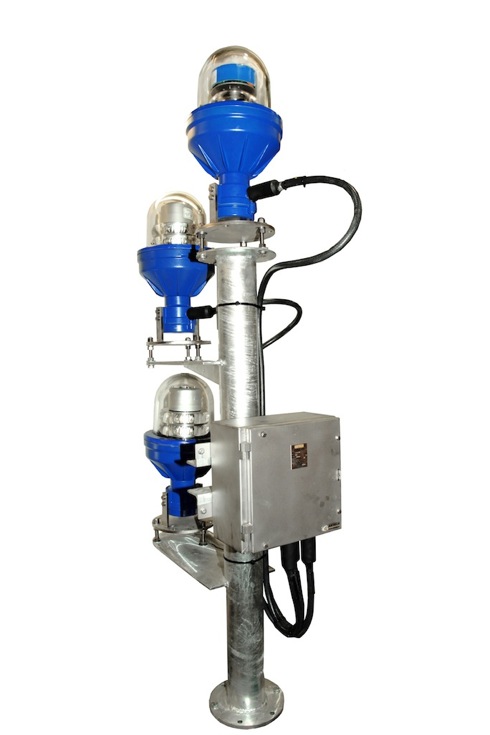 Syncrolan Light Station
Syncrolan Light Station
